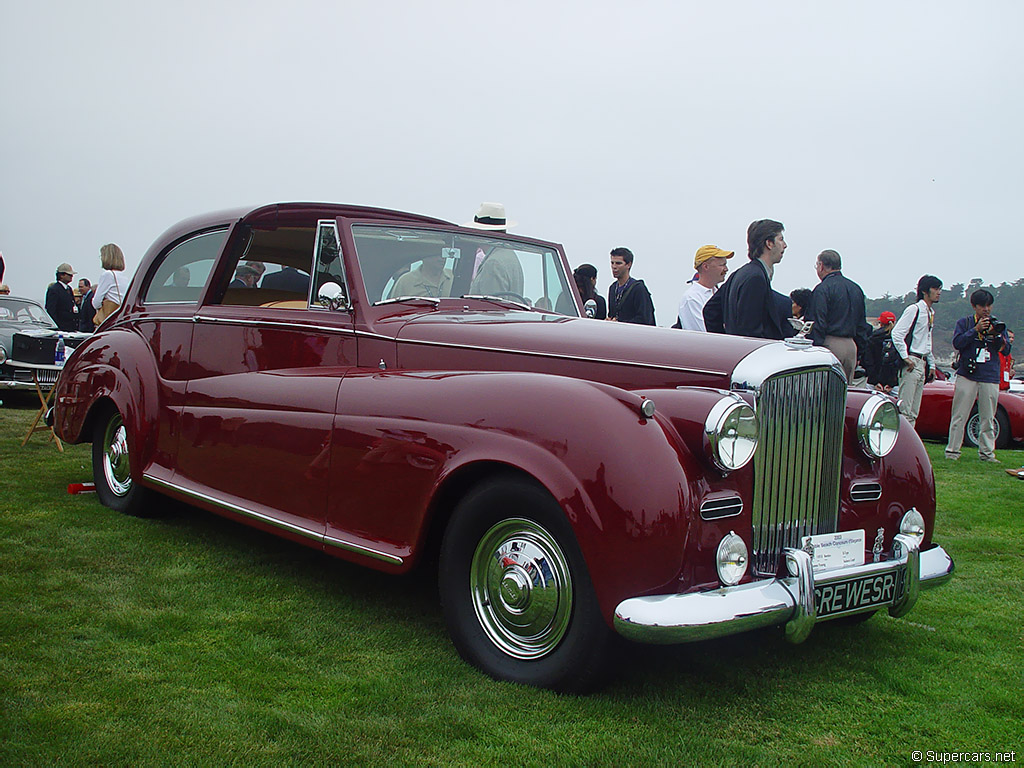
1951 Bentley R-Type
The Bentley R Type is the second series of post-war Bentley automobiles, replacing the Mark VI. Essentially a larger-boot version of the Mk VI, the R type is regarded by some as a stop-gap before the introduction of the S series cars in 1955. As with its predecessor, a standard body was available as well as coachbuilt versions by firms including H. J. Mulliner & Co., Park Ward, Harold Radford, Freestone and Webb, Carrosserie Worblaufen and others.
Other than the radiator grilles and the carburation there was little difference between the standard Bentley R Type and the Rolls-Royce Silver Dawn. The R Type was the more popular marque. Some 2,500 units were manufactured during its run, as compared to the Silver Dawn's 760.
During development it was referred to as the Bentley Mark VII; the chassis cards for these cars describe them as Bentley 7. The R Type name which is now usually applied stems from chassis series RT. The front of the saloon model was identical to the Mark VI, but the boot (trunk) was almost doubled in capacity The engine displacement was approximately 4½ litres, as fitted to later versions of the Mark VI. An automatic choke was fitted to the R-type's carburettor. The attachment of the rear springs to the chassis was altered in detail between the Mark VI and the R Type.
For buyers looking for a more distinctive car, a decreasing number had custom coachwork available from the dwindling number of UK coachbuilders. These ranged from the grand flowing lines of Freestone and Webb's conservative, almost prewar shapes, to the practical conversions of Harold Radford which included a clamshell style tailgate and folding rear seats.



































































